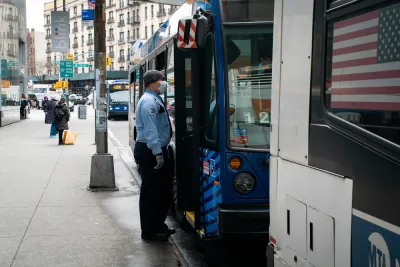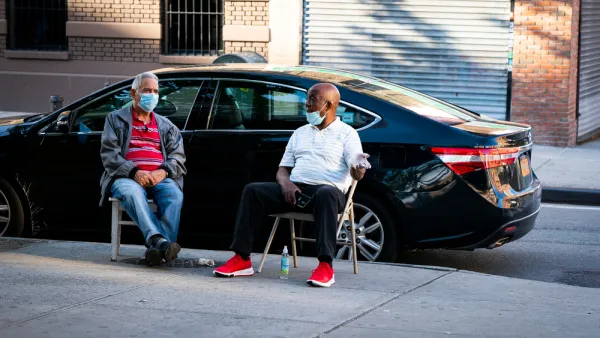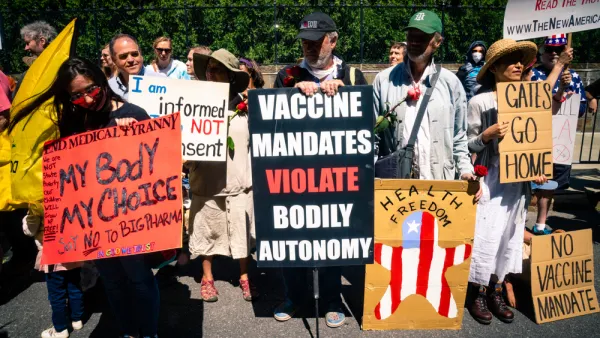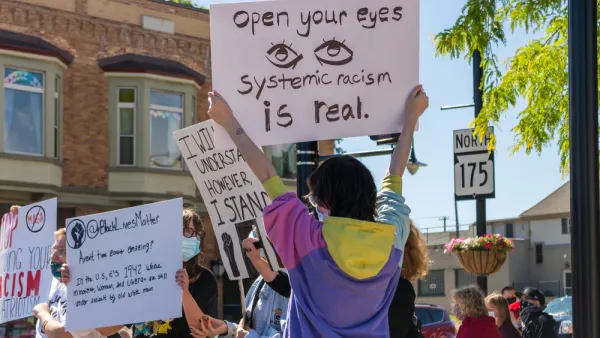Black and Latino Americans in the United States are dying from COVID-19 at a much higher rate than whites. The foundation for the tragedy has been laid for decades.

ProPublica offered the first in-depth news analysis of the high infection rates of coronavirus in Black communities in Milwaukee, where misinformation and mistrust made it difficult to convince many Black people to protect themselves.
The long history of structural racism also sowed the seeds for this public health crisis in the Black community, according to the authors of the story, Akilah Johnson and Talia Buford. "Environmental, economic and political factors have compounded for generations, putting black people at higher risk of chronic conditions that leave lungs weak and immune systems vulnerable: asthma, heart disease, hypertension and diabetes."
As documented by the ProPublica team, the disease has inflicted damage on Black communities in Michigan, Louisiana, North Carolina, and Illinois. Since then, numerous articles have repeated and supplemented these findings as the extent of the human costs of the pandemic have continued to skew across racial lines. Here's a sample of additional news coverage of the racial data on coronavirus infections in the United States, including attention eventually paid to New York City, the geographic location experiencing the largest outbreak in the United States:
- What the Racial Data Show (The Atlantic, April 6)
- The coronavirus is infecting and killing black Americans at an alarmingly high rate (The Washington Post, April 7)
- Black Americans Face Alarming Rates of Coronavirus Infection in Some States (The New York Times, April 7)
- NY releases racial COVID-19 data (City & State New York, April 8)
- Virus Is Twice as Deadly for Black and Latino People Than Whites in N.Y.C. New York Times (The New York Times, April 8)
The thread of environmental injustice runs throughout these data. People of color are dying more of COVID-19 because of environmental and planning policies that expose these communities to higher rates of pollution and because neighborhoods are segregated by occupation and class.
As for potential responses to the current public health crisis, Joe Barrett, Coulter Jones, and Ebony Reed report in a paywalled Wall Street Journal article about how mayors are responding to the racial inequities apparent in the public health outcomes of COVID-19, and The New York Times editorial board added its two cents about how to save lives in the Black and Latino communities during the pandemic, including releasing better data, speeding medical care for Black and Latino Americans ("These disparities in access and outcomes call out for more fundamental changes in health care policy in the United States," according to the editorial), providing alternative housing for workers and others who live in large households and have no way to isolate themselves if they get sick, and potentially dispatching the National Guard to distribute food and other services.
At some point during the recovery from this public health and economic crisis, it will be time for planners and policy makers to make fundamental changes to the way communities are planned and built in the United States, similar to the changes the New York Times editorial proposes for the healthcare industry.
FULL STORY: Early Data Shows African Americans Have Contracted and Died of Coronavirus at an Alarming Rate

Analysis: Cybertruck Fatality Rate Far Exceeds That of Ford Pinto
The Tesla Cybertruck was recalled seven times last year.

National Parks Layoffs Will Cause Communities to Lose Billions
Thousands of essential park workers were laid off this week, just before the busy spring break season.

Retro-silient?: America’s First “Eco-burb,” The Woodlands Turns 50
A master-planned community north of Houston offers lessons on green infrastructure and resilient design, but falls short of its founder’s lofty affordability and walkability goals.

Test News Post 1
This is a summary

Analysis: Cybertruck Fatality Rate Far Exceeds That of Ford Pinto
The Tesla Cybertruck was recalled seven times last year.

Test News Headline 46
Test for the image on the front page.
Urban Design for Planners 1: Software Tools
This six-course series explores essential urban design concepts using open source software and equips planners with the tools they need to participate fully in the urban design process.
Planning for Universal Design
Learn the tools for implementing Universal Design in planning regulations.
EMC Planning Group, Inc.
Planetizen
Planetizen
Mpact (formerly Rail~Volution)
Great Falls Development Authority, Inc.
HUDs Office of Policy Development and Research
NYU Wagner Graduate School of Public Service




























